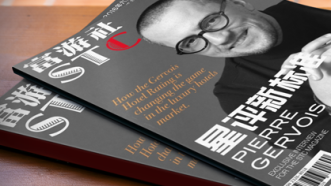 China Confidential, a Financial Times research service, estimates that total spending by Chinese travellers on outbound trips hit Rmb3.1tn ($498bn) in 2014. Spending by Chinese tourists is now greater than total spending on household consumption of around $436bn in Indonesia and $442bn in Turkey. And this figure is even more remarkable given that the Chinese outbound tourism trend is at a relatively early stage. Although the number of Chinese outbound trips grew 20 per cent year-on-year to 117m in 2014, according to official tourism statistics, less than 6 per cent of the population hold a passport.
China Confidential, a Financial Times research service, estimates that total spending by Chinese travellers on outbound trips hit Rmb3.1tn ($498bn) in 2014. Spending by Chinese tourists is now greater than total spending on household consumption of around $436bn in Indonesia and $442bn in Turkey. And this figure is even more remarkable given that the Chinese outbound tourism trend is at a relatively early stage. Although the number of Chinese outbound trips grew 20 per cent year-on-year to 117m in 2014, according to official tourism statistics, less than 6 per cent of the population hold a passport.
China Confidential’s estimate for total spending is higher than the official estimate of $200bn, which excludes spending on flights, visas and other items. But the figures are in line with those from other external sources. They closely match estimates of non-educational spending by Chinese visitors to the US, for example, by the US National Tourism Office.
However, while the amount of current spending and the potential for growth remain enormous, there are signs that many travellers are starting to cut back on spending while overseas as their priorities change.
In particular, China Confidential’s latest annual report on outbound tourism, released this week and based on a survey of 1,288 outbound tourists and 40 travel agencies nationwide, identified a 6.2 per cent year-on-year slowdown in per capita spending on travellers’ outbound trips during 2015, following a 9.4 per cent decline between 2013 and 2014. The most recent contraction was led by an 8 per cent year-on-year decline in spending on shopping.
The lower spend on shopping is in part related to domestic conditions. The general macroeconomic slowdown may have prompted some travellers to rein in their spending during overseas trips, while Beijing’s anti-corruption drive has resulted in a marked reduction in gifting purchases among wealthier travellers in particular.
However, it would be wrong to view this slowdown purely in macro or policy terms. Instead, lower spending on shopping is part of a broader shift in spending priorities, with wealthier travellers increasingly prioritising experiences over luxury purchases. On average, travellers in the high-income cohort spent 31.1 per cent more than they had a year earlier on entertainment and 78.6 per cent more on other services including car rental and excursions. Those making purchases are increasingly opting for more affordable or lesser known brands, echoing trends seen domestically.
 These shifting priorities should broaden the potential beneficiaries of the Chinese outbound trend beyond the luxury retailers that have been the chief winners to date. Rising spending on experiences should benefit hospitality, entertainment and tourism service industries to a far greater extent than in the past, when many Chinese overseas travellers scrimped on hotels, food and activities to spend more at the shops. And the beneficiaries will not just be the big-name hoteliers, restaurateurs and tourist attractions, with many travellers seeking to ditch the growing crowds of fellow countrymen and venture off the beaten track.
These shifting priorities should broaden the potential beneficiaries of the Chinese outbound trend beyond the luxury retailers that have been the chief winners to date. Rising spending on experiences should benefit hospitality, entertainment and tourism service industries to a far greater extent than in the past, when many Chinese overseas travellers scrimped on hotels, food and activities to spend more at the shops. And the beneficiaries will not just be the big-name hoteliers, restaurateurs and tourist attractions, with many travellers seeking to ditch the growing crowds of fellow countrymen and venture off the beaten track.
China’s outbound journey has plenty of mileage left to run. Understanding rapidly shifting tastes and spending patterns will be key to capitalising on this long-term growth story.
Copyright : The Financial Times Limited 2015
Source: Matthew Plowright, article published on April 28, 2015 in http://www.ft.com



